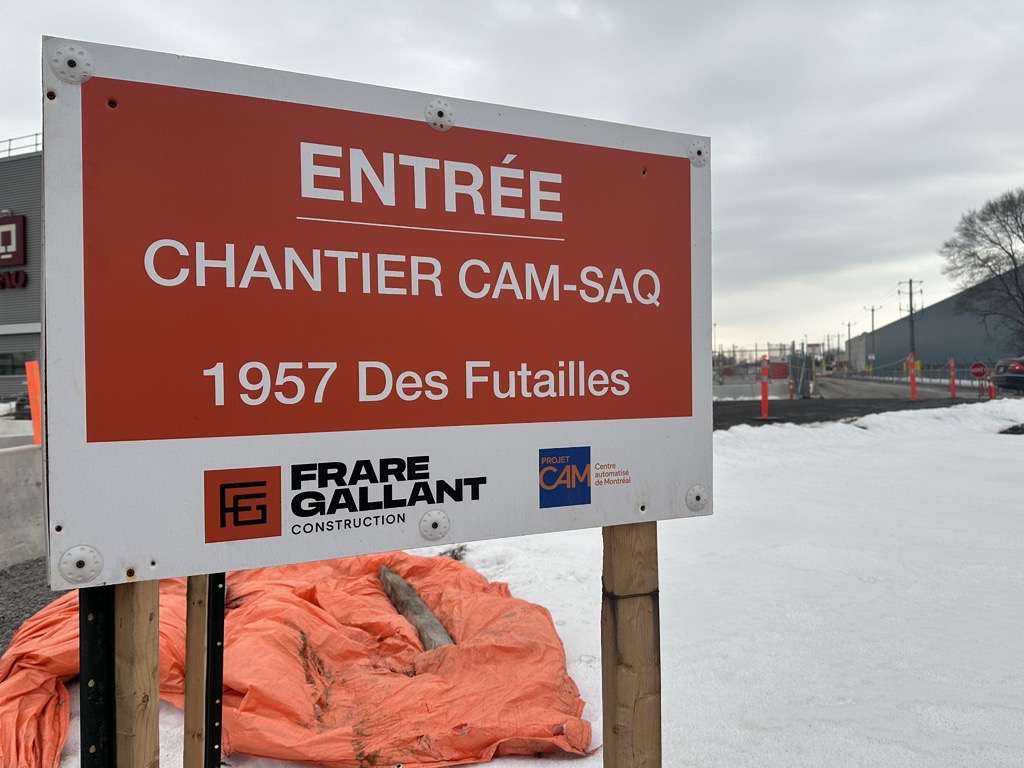The Kanien’keha:ka Kahnistensera, known as the Mohawk Mothers, are calling for further investigation into possible unmarked graves at the SAQ’s Montreal distribution centre, after the SAQ announced Thursday that the archaeological inventory carried out over the past few weeks on the grounds of the site on Montreal’s east end has not revealed any human bones and construction work there will continue.
In February, the provincial crown corporation responsible for alcohol sales halted its excavation work as part of an expansion project after the Mohawk Mothers, and the Committee of Duplessis Orphans Victims of Abuse sent them a letter saying remains of Indigenous and non-Indigenous children could be buried there.
The site in question – on Futailles Street in Mercier-Hochelaga-Maisonneuve – was used as an informal cemetery for the Saint-Jean-de-Dieu asylum during the end of the 19th century and the first half of the 20th century. It was also referred to as the “pigsty” cemetery because it was also a pigsty during the same time.
The Duplessis Orphans were often sent there. Indigenous patients were also present there, according to the Mohawk Mothers.
They were several thousand children who were wrongly certified as mentally ill by the Quebec government and put into psychiatric institutions in the 1940s and ‘50s and sometimes experimented on.
“Since the beginning of this highly sensitive issue for all parties involved, the SAQ has been committed to doing things right and being transparent,” the SAQ’s press release stated.
The SAQ called on the archaeological consulting firm Arkéos for the archaeological inventory, which consisted of a team of archaeologists that took place entirely in the presence of observers representing the Duplessis Orphans and the Mohawk Mothers, they say.
The SAQ said the experts conclude that the bones and bone fragments found on the future site during the archaeological inventory are of animal origin. They also add that the investigated area was strictly used for agricultural purposes until it was sold to the SAQ.
Therefore said they welcome the experts’ conclusions and will begin work on the expansion starting next week.
“Since last January, the Kanien’keha:ka Kahnistensera and the Duplessis Orphans have attended meetings with representatives from the SAQ in order to discuss a respectful and thorough search for human remains before any construction work begins,” said the Mohawk Mothers in a press release Friday. “On April 10, 2024, all parties agreed that an archeological inventory could proceed using the SAQ’s contractor Arkéos provided that the Canadian Archaeological Association’s Working Group on Unmarked Graves (CAAWGUG) would peer-review the reports and provide additional recommendations before the construction begins.”
Mohawk Mothers say the CAAWGUG recommendations were received just after the SAQ’s press release was published.
“As the leading national body of experts formed to address the need for research into the mass genocide of Indigenous people at sites like residential schools, the CAAWGUG recommended the use of Historic Human Remains Detection Dogs (HHRDD) in the area, as well as to identify any human bones found by Arkéos on the site, nearly half of which have not yet been determined as human or animal,” Mohawk Mothers said.
They also say the CAAWGUG recommended further investigation using archaeological techniques based on their expertise in finding and identifying unmarked graves and burials to be conducted before any development continues.
“Continuing the development without further investigation would risk disturbing and potentially destroying the graves of the most vulnerable of our society who died of maltreatment while retraumatizing the survivors of one of the darkest chapters of our history,” said the Mohawk Mothers.
“Despite the absence of human bones on this portion of the land, the SAQ recognizes that a painful part of history may have taken place in the past in the place where its activities are now located,” the SAQ’s press release says. “We are committed to recognizing this chapter of history on the property at the end of the expansion, working with these two groups to determine the form this memorial space will take.”
